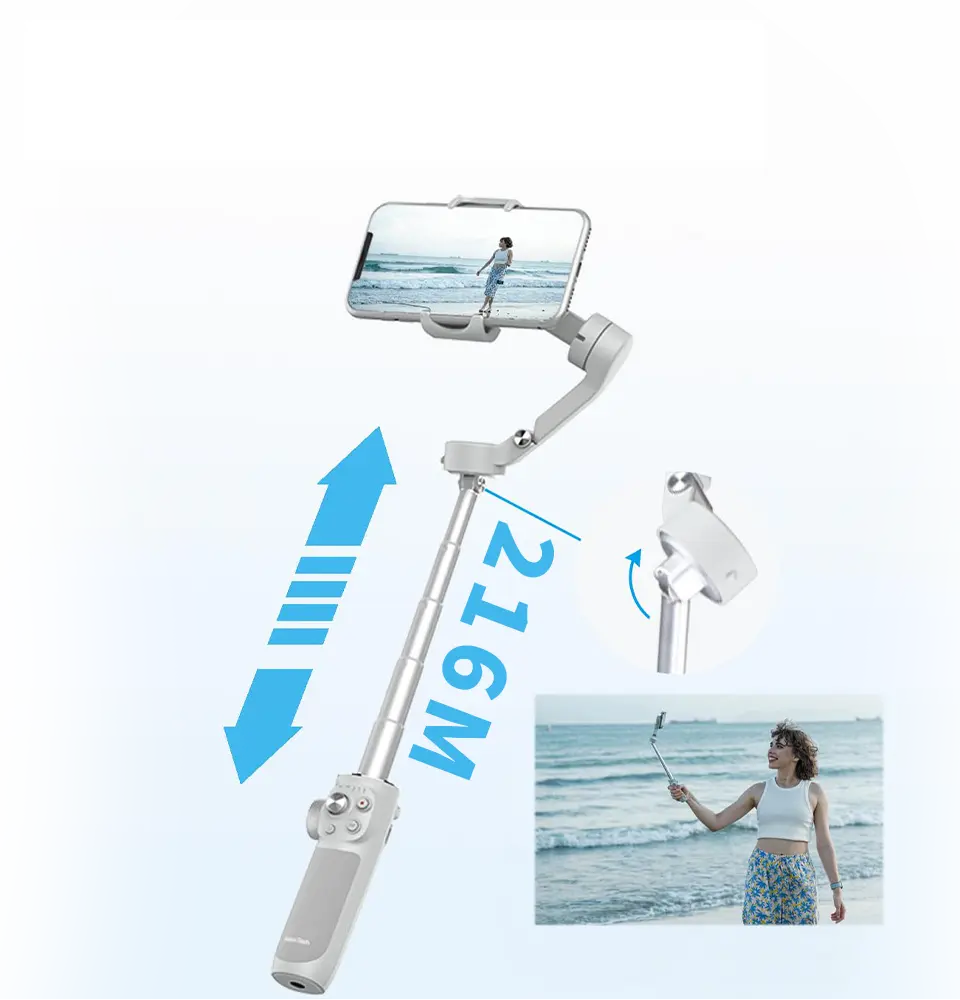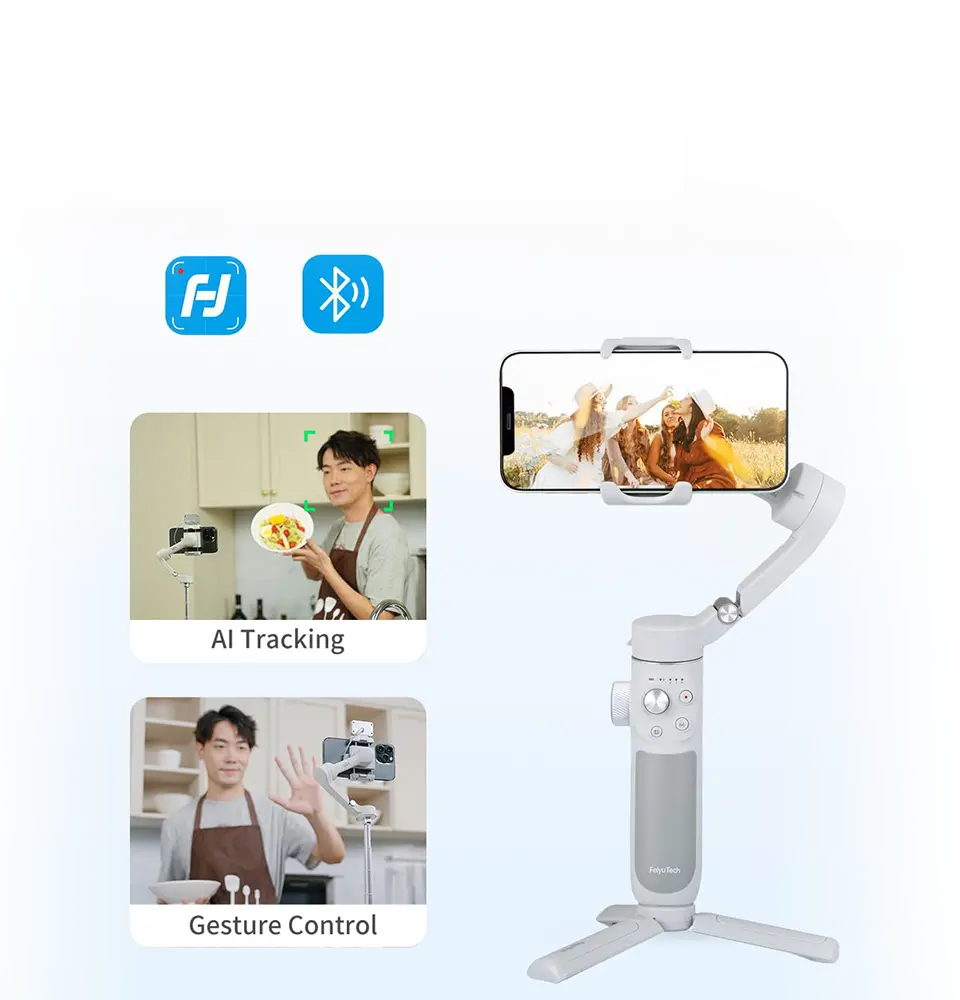In today’s fast-paced world of content creation, capturing cinematic quality is no longer the preserve of large film studios. With the rise of vlogging, drone photography, and independent filmmaking, the demand for smooth, professional-quality footage has skyrocketed—and a 3-Axis Gimbal Stabilizer is key to that. More than just a tool, a professional 3-axis gimbal can help creators eliminate shaky footage, provide smooth tracking shots, and maintain consistent framing in dynamic scenes. Whether shooting with a mirrorless camera or making videos on the go, understanding the basic features of these gimbals can help users make an informed purchasing decision.
Precise Motion Control in a 3-Axis Gimbal Stabilizer for Cinematic Results
One of the most notable features of a high-quality 3-axis gimbal is its ability to provide precise motion control. The gimbal achieves this by balancing three axes simultaneously (tilt, roll, and pan), resulting in stable, shaky footage even when moving quickly. This is especially valuable in action-packed scenes or fast-paced environments. Advanced models feature brushless motors with high torque output for fine-tuning and high response speeds. Many models also incorporate encoder technology and inertial measurement units (IMUs) to provide real-time motion data for increased accuracy. These elements ensure that the gimbal can quickly adapt to sudden angle or subject position changes. The result? Smooth pans, seamless tracking, and natural transitions are impossible with handheld shooting.

Compatibility and Payload Capacity of 3-Axis Gimbals
Another important consideration when choosing a 3-Axis Gimbal Stabilizer is its compatibility and payload capacity. Professional users often use various equipment, from DSLR and mirrorless cameras to cinema-grade equipment with heavy lenses, microphones, and external monitors. High-end gimbals must support payloads of up to 4.5 kg or more without compromising balance or battery life. Many professional-grade gimbals come with quick-release plates, adjustable arms, and universal mounting points to accommodate different camera models. Compatibility with accessories such as focus systems and external recorders is also critical for commercial videographers. Brands that offer intuitive mobile apps or firmware updates further extend compatibility by ensuring that new camera models and gimbal features remain integrated.
Battery Performance and Runtime
Battery life is critical for professionals who need to shoot for long periods. Professional 3-Axis Gimbal Stabilizers should have a long runtime, ideally 10 to 16 hours on a single charge. This performance is critical during weddings, extended interviews, or all-day commercial shoots. Advanced gimbals often feature removable lithium-ion batteries or built-in USB-C charging ports, allowing users to charge anytime. Some even support hot-swappable batteries, which means users can replace batteries without interrupting shooting. In addition, a power output port enables you to charge the camera or external monitor directly from the gimbal, significantly improving workflow efficiency.
Intelligent Tracking and Subject Recognition
Modern 3-Axis Gimbal Stabilizers for mobile devices and cameras increasingly integrate AI tracking and subject recognition capabilities. This feature has become indispensable with the rise of individual creators and live content streaming. These intelligent systems can automatically detect and track subjects in real-time using facial recognition, motion prediction algorithms, and object lock functions. Whether shooting a dance video, a walk-and-talk vlog, or a dynamic interview, Intelligent Tracking saves users from manually adjusting the camera angle. It also ensures the subject is always focused, significantly improving video quality. In more advanced models, users can define tracking areas, control the gimbal with gestures, and even sync it with a smartphone app for remote operation.

Build Quality and Ergonomics
Durability and comfort are the foundation of any professional 3-axis gimbal stabilizer. High-quality models are often made of aircraft-grade aluminium alloy or carbon fibre, which are both strong and lightweight. These materials help withstand live productions’ wear and tear, frequent travel, and tight shooting schedules. Ergonomic design is equally important. Gimbals with comfortable handles, intuitive control layouts, and balanced weight distribution minimize user fatigue during long periods of use. Features such as adjustable handles, tilting displays, and modular configurations allow for handheld, hanging, or dual-grip shooting modes—providing flexibility depending on the project’s needs. In addition, weatherproof construction and non-slip coatings increase user convenience, especially when shooting outdoors or in challenging environments. These design elements reflect the professional standards of gimbals used for practical field applications.
Choosing a 3-axis gimbal stabilizer for professional use
In summary, the key functions of a professional 3-axis gimbal stabilizer go far beyond simple stabilization. From intelligent subject tracking and advanced motion control to extended battery life and durable build quality, these tools are designed to enhance reliability, performance, and creative freedom. Whether you are an experienced filmmaker or an aspiring content creator, investing in a top-notch gimbal will ensure you consistently achieve professional results in various shooting conditions.

